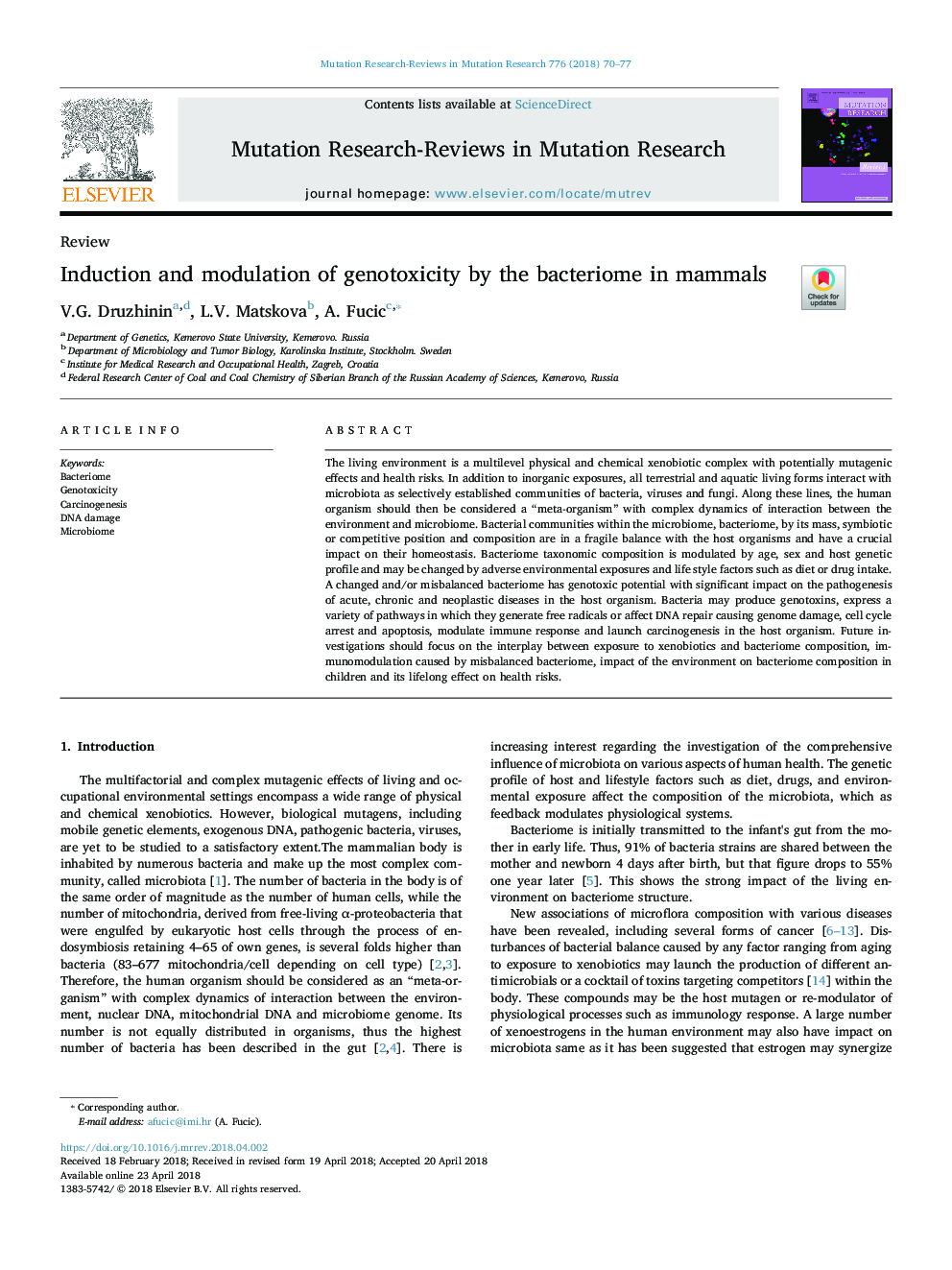| Article ID | Journal | Published Year | Pages | File Type |
|---|---|---|---|---|
| 8456690 | Mutation Research/Reviews in Mutation Research | 2018 | 8 Pages |
Abstract
The living environment is a multilevel physical and chemical xenobiotic complex with potentially mutagenic effects and health risks. In addition to inorganic exposures, all terrestrial and aquatic living forms interact with microbiota as selectively established communities of bacteria, viruses and fungi. Along these lines, the human organism should then be considered a “meta-organism” with complex dynamics of interaction between the environment and microbiome. Bacterial communities within the microbiome, bacteriome, by its mass, symbiotic or competitive position and composition are in a fragile balance with the host organisms and have a crucial impact on their homeostasis. Bacteriome taxonomic composition is modulated by age, sex and host genetic profile and may be changed by adverse environmental exposures and life style factors such as diet or drug intake. A changed and/or misbalanced bacteriome has genotoxic potential with significant impact on the pathogenesis of acute, chronic and neoplastic diseases in the host organism. Bacteria may produce genotoxins, express a variety of pathways in which they generate free radicals or affect DNA repair causing genome damage, cell cycle arrest and apoptosis, modulate immune response and launch carcinogenesis in the host organism. Future investigations should focus on the interplay between exposure to xenobiotics and bacteriome composition, immunomodulation caused by misbalanced bacteriome, impact of the environment on bacteriome composition in children and its lifelong effect on health risks.
Related Topics
Life Sciences
Biochemistry, Genetics and Molecular Biology
Cancer Research
Authors
V.G. Druzhinin, L.V. Matskova, A. Fucic,
